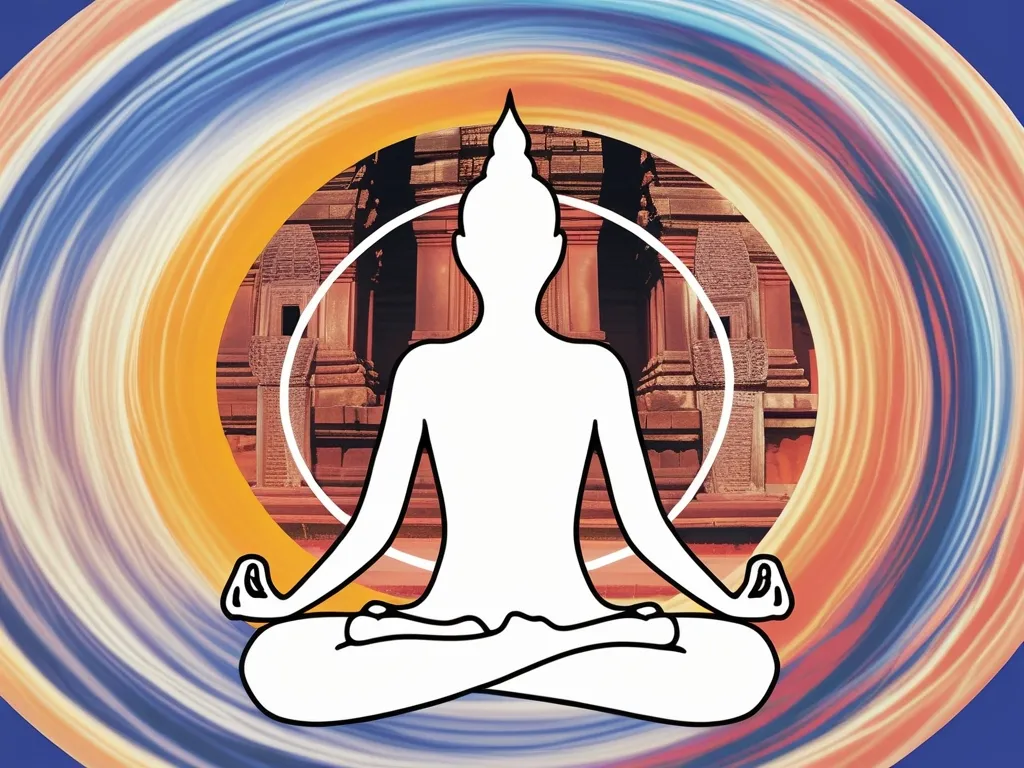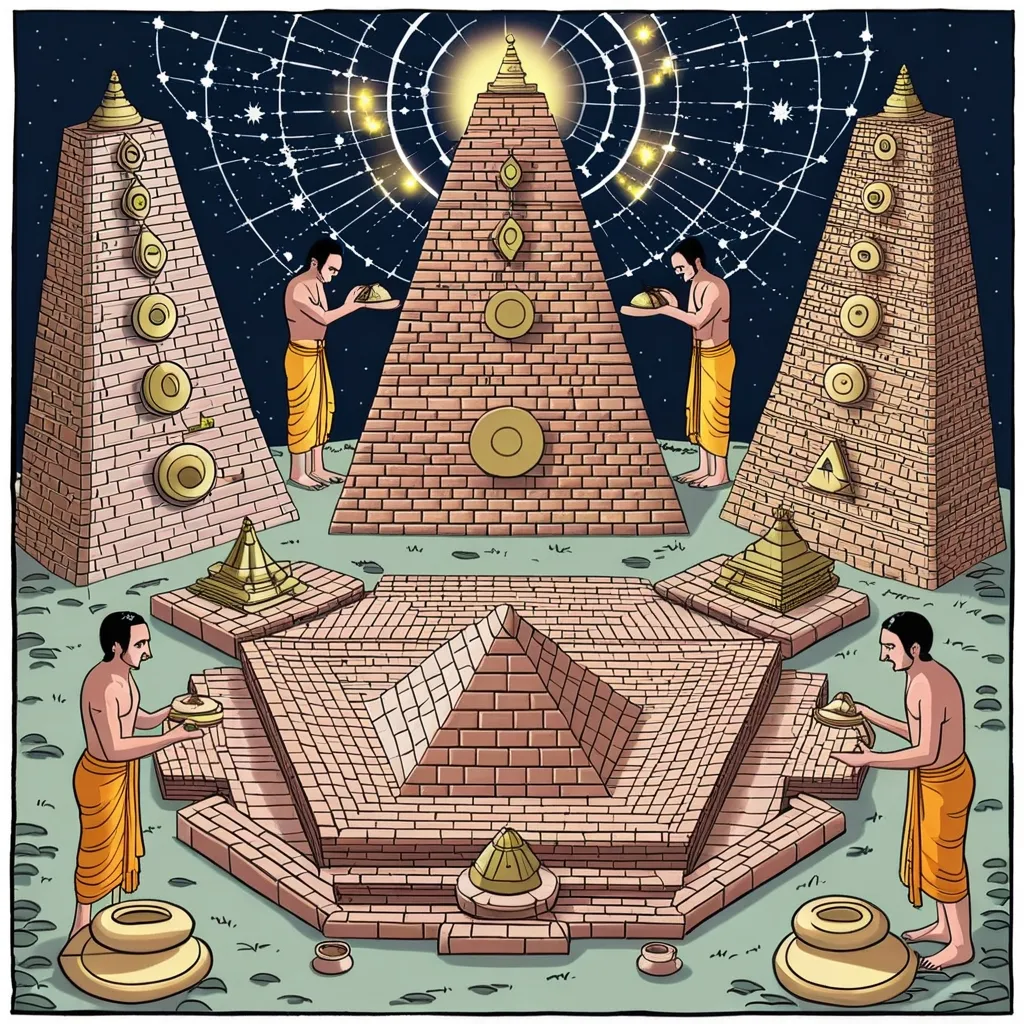In the vast and intricate tapestry of Hindu philosophy, there exists a concept that is both profound and often overlooked: Sama. This principle of equality, harmony, and balance is deeply rooted in the ancient Vedic texts, particularly the Sama Veda, and it permeates various aspects of Hindu thought, from musical traditions to social ethics and spiritual practices.
To understand Sama, let’s begin with its most literal interpretation. The term “Sama” means “song” or “melody,” and it is this musical aspect that forms the core of the Sama Veda. This Veda is not just a collection of hymns but a liturgical text that consists of 1,875 verses, most of which are derived from the Rigveda. However, it is the way these verses are transformed into melodies that sets the Sama Veda apart. The text is more of a musical score, designed to be heard rather than read, with melodies that existed before the verses themselves. This integration of music and spirituality is a key aspect of Sama, highlighting the importance of harmony in both sound and meaning.
The Sama Veda is more than just a musical text; it is a philosophical treatise that delves into the very fabric of existence. Embedded within it are the Chandogya Upanishad and the Kena Upanishad, two of the most influential Upanishads in Hindu philosophy. These texts explore abstract speculations and philosophical questions, such as the origin of the world and the nature of Brahman, the ultimate reality. For instance, the Chandogya Upanishad discusses the concept of Udgitha, which is the primal sound or melody that underlies all existence. This Udgitha is not just a musical concept but a philosophical one, symbolizing the creative principle that lies at the heart of the universe.
Sama is also closely tied to the concept of balance and equilibrium. In the context of Vedic rituals, Sama represents the harmony that must be maintained between different elements. For example, during the Somayaga ritual, six different groups of priests are involved, each with their specific roles. The Udgatar priests, who sing the verses of the Sama Veda, play a crucial role in maintaining this balance. Their chanting is not just a musical performance but a way of aligning the ritual with the cosmic order.
This principle of balance extends beyond rituals to social ethics and personal relationships. Sama emphasizes the importance of self-control, gentle speech, and respectful interaction. In the Puranas, Sama is described as a vital component of spiritual rituals, promoting harmony and tranquility. It is a call to live a life of equanimity, where one’s actions and words are in tune with the natural order of the universe.
In spiritual practices, Sama is linked to the concept of Brahman, the ultimate reality that underlies all existence. The Chandogya Upanishad explains that the term “space” in the context of Udgitha is a symbolism for Brahman. This highlights the interconnectedness of all things and the importance of recognizing this unity in our spiritual pursuits. Sama, therefore, is not just a musical or philosophical concept but a spiritual practice that helps us align ourselves with the cosmic harmony.
The influence of Sama can also be seen in the way it shapes our understanding of conflict resolution and inner peace. In the context of Dharmashastra, Sama is presented as a peaceful strategy in conflicts, emphasizing the need for calm and respectful dialogue. This approach is rooted in the belief that harmony is a dynamic process, requiring constant adjustment and alignment. By adopting this perspective, we can navigate life’s complexities with greater ease and find inner peace even in the midst of turmoil.
Sama’s role in maintaining balance between opposing forces is a recurring theme in Vedic philosophy. From the microcosm of personal relationships to the macrocosm of universal laws, Sama teaches us that harmony is not a static state but a continuous process. This is reflected in the way the Sama Veda describes the creation of the universe, where the absolute reality enters into the world, creating a grand symphony of equilibrium.
For those who are music lovers, the Sama Veda offers a unique perspective on the art of music. The text describes how the melodies were created to fit the words of the Rigveda, often using creative structures like Stobha to make the words fit better into the music. This blend of music, sounds, and meaning is what makes the Sama Veda so special, and it has laid the foundation for subsequent Indian music traditions.
In essence, Sama is a multifaceted concept that weaves through various aspects of Vedic thought. It is a principle of equality and harmony that guides us in our musical, social, and spiritual endeavors. By understanding and embracing Sama, we can gain fresh insights into conflict resolution, inner peace, and the art of living in tune with cosmic rhythms.
As we delve deeper into the concept of Sama, we find that it is not just an abstract idea but a practical guide for living. It teaches us to approach life with equanimity, to maintain balance in all our actions, and to recognize the interconnectedness of all things. Whether you are a spiritual seeker, a music lover, or simply someone curious about different approaches to harmony, the concept of Sama offers a profound and enriching perspective.
In the words of the Chandogya Upanishad, “What is the origin of this world? Space, said he. Verily, all things here arise out of space. They disappear back into space, for space alone is greater than these, space is the final goal.” This philosophical stance underscores the cosmic harmony that Sama represents – a harmony that is both the origin and the ultimate goal of all existence.
As we reflect on the essence of Sama, we are reminded that harmony is not something we achieve but something we maintain. It is a continuous process of adjustment and alignment, a dynamic balance that we strive to uphold in all aspects of our lives. By embracing this principle, we can live in greater harmony with ourselves, with others, and with the universe itself. This is the profound lesson that the concept of Sama teaches us, a lesson that resonates deeply in the heart of Vedic philosophy.






